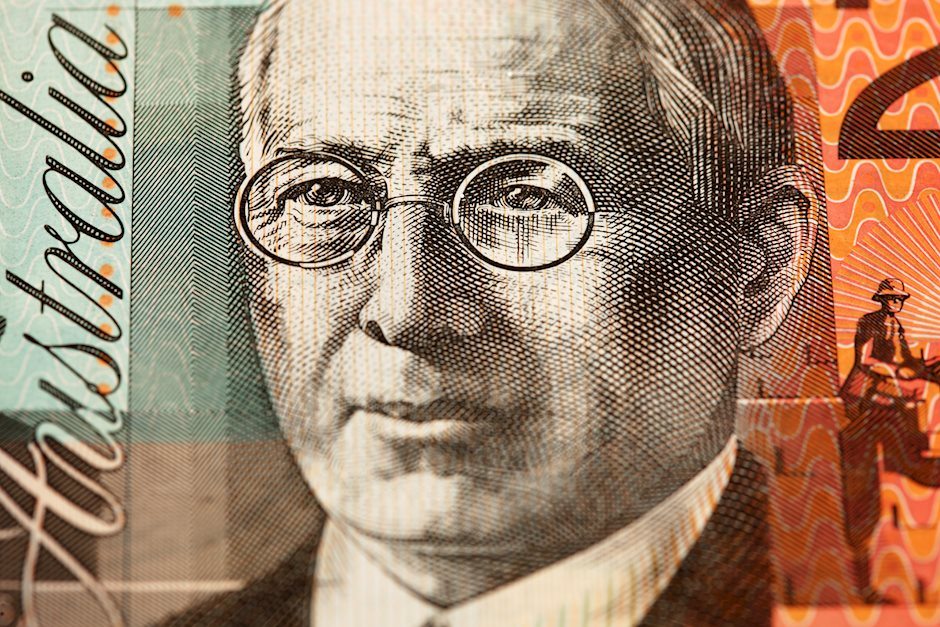AUD/USD faces selling pressure near 0.6850 as traders brace for US NFP
- AUD/USD remains restricted to 0.6850 amid caution ahead of the US NFP data for September.
- The US NFP data will significantly influence the Fed’s interest rate cut path.
- Investors await the RBA minutes to project the next move in the Australian Dollar.

The AUD/USD pair remains offered near the key resistance of 0.6850 in Friday’s European session. The Aussie asset would continue to face pressure as traders brace for the United States (US) Nonfarm Payrolls (NFP) data for September, which will be published at 12:30 GMT.
With growing conflicts in the Middle East region, market sentiment remains uncertain. Risk-perceived currencies are under pressure as rising Oil prices due to Israel-Iran war would result in a sharp increase in foreign outflows of those economies, which are highly dependent on imported Oil. The US Dollar Index (DXY), which tracks the Greenback’s value against six major currencies, clings to gains near 102.00.
The US NFP will be under the spotlight as it would force traders to adjust market expectations for Federal Reserve’s (Fed) monetary policy action in the remaining two meetings this year. Currently, financial markets are slightly confident about the Fed to reduce interest rates further by 75 basis points (bps).
Economists expect the addition of fresh payrolls at 140K, marginally lower than 142K in August. The Unemployment Rate is seen steady at 4.2%. Market participants will also focus on the Average Hourly Earnings data, a key measure to wage growth that drives consumer spending. The annual wage growth measure is estimated to have risen steadily by 3.8%, with monthly growth rate slowing to 0.3% from 0.4% in August.
In the Asia-Pacific region, the next trigger for the Australian Dollar (AUD) will be the Reserve Bank of Australia (RBA) Meeting Minutes of the September policy meeting. In the meeting, the RBA left interest rates unchanged at 4.35%, as expected. The RBA also signalled that there was no offer for a further hike on the table.
Australian Dollar FAQs
One of the most significant factors for the Australian Dollar (AUD) is the level of interest rates set by the Reserve Bank of Australia (RBA). Because Australia is a resource-rich country another key driver is the price of its biggest export, Iron Ore. The health of the Chinese economy, its largest trading partner, is a factor, as well as inflation in Australia, its growth rate and Trade Balance. Market sentiment – whether investors are taking on more risky assets (risk-on) or seeking safe-havens (risk-off) – is also a factor, with risk-on positive for AUD.
The Reserve Bank of Australia (RBA) influences the Australian Dollar (AUD) by setting the level of interest rates that Australian banks can lend to each other. This influences the level of interest rates in the economy as a whole. The main goal of the RBA is to maintain a stable inflation rate of 2-3% by adjusting interest rates up or down. Relatively high interest rates compared to other major central banks support the AUD, and the opposite for relatively low. The RBA can also use quantitative easing and tightening to influence credit conditions, with the former AUD-negative and the latter AUD-positive.
China is Australia’s largest trading partner so the health of the Chinese economy is a major influence on the value of the Australian Dollar (AUD). When the Chinese economy is doing well it purchases more raw materials, goods and services from Australia, lifting demand for the AUD, and pushing up its value. The opposite is the case when the Chinese economy is not growing as fast as expected. Positive or negative surprises in Chinese growth data, therefore, often have a direct impact on the Australian Dollar and its pairs.
Iron Ore is Australia’s largest export, accounting for $118 billion a year according to data from 2021, with China as its primary destination. The price of Iron Ore, therefore, can be a driver of the Australian Dollar. Generally, if the price of Iron Ore rises, AUD also goes up, as aggregate demand for the currency increases. The opposite is the case if the price of Iron Ore falls. Higher Iron Ore prices also tend to result in a greater likelihood of a positive Trade Balance for Australia, which is also positive of the AUD.
The Trade Balance, which is the difference between what a country earns from its exports versus what it pays for its imports, is another factor that can influence the value of the Australian Dollar. If Australia produces highly sought after exports, then its currency will gain in value purely from the surplus demand created from foreign buyers seeking to purchase its exports versus what it spends to purchase imports. Therefore, a positive net Trade Balance strengthens the AUD, with the opposite effect if the Trade Balance is negative.
Author

Sagar Dua
FXStreet
Sagar Dua is associated with the financial markets from his college days. Along with pursuing post-graduation in Commerce in 2014, he started his markets training with chart analysis.
















